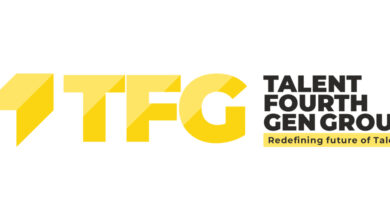Tanzania Construction Market Report to 2025 – Size, Trends and Forecasts – ResearchAndMarkets.com

DUBLIN–(BUSINESS WIRE)–The “Tanzania Construction Market Size, Trends and Forecasts by Sector – Commercial, Industrial, Infrastructure, Energy and Utilities, Institutional and Residential Market Analysis, 2020-2025” report has been added to ResearchAndMarkets.com’s offering.
Tanzania’s construction industry remained relatively strong in 2020, as it expanded by 9.1% – although this reflects a slowdown from the annual average growth of 14.3% between 2016-2019.
In recent years, construction has been a major contributor to economic growth with increased investments in infrastructure, such as the construction of railways, roads, and airport, as well as spending on improving the provision of a wider and more reliable electricity network, the improvement of transportation services, and the increase in the extraction of minerals, especially gold and coal.
The government has also improved its fiscal position, benefiting from increased collection of taxes and improved efficiency in government operations. However, although there was a smooth succession following the death of President John Magufuli in March 2021, the government’s handling of the COVID-19 crisis has been ineffective with a weak vaccination rate, and new waves of infection during August 2021 also disrupted economic activity. Moreover, with growth in the industry slowing down due to the deceleration in the economy, annual growth of 1.9% was recorded in Q2 2021, compared with 5.3% growth in Q1 2021. Nevertheless, GlobalData expects that industry growth will again build momentum in 2022. Indeed, the industry is predicted to grow by an annual average rate of 7.9% over 2022-2025.
Tanzania continues to attract foreign direct investment (FDI); data from Tanzania Investment Center (TIC) indicates that the country has registered 235 projects in the current fiscal year 2021/2022, up from 219 projects during the same period in the previous fiscal year 2020/2021. Moreover, during March-August 2021, the country registered 133 projects with an estimated investment of TZS7.5 trillion (US$3 billion), up from 105 projects during the same period in 2020 with an investment of TZS1.2 trillion (US$510 million).
Tanzania Development Vision 2025 is focused on supporting the private sector, industrialization, and job creation. It aims to improve the business climate by upgrading infrastructure, easing access to finance, and improving public resource management and administration. In the short term, there is still a risk of a decline in project financing in light of the COVID-19 pandemic, which will slow the progress on some of the country’s flagship infrastructure projects, such as the cross-border standard-gauge railway (SGR) with Rwanda and the expansion of energy infrastructure, though the government is committed to implementing such projects.
Over the medium to long term, the construction industry will be driven by the success in pushing ahead with major LNG projects and significant support from the International Monetary Fund (IMF). In November 2021, the government announced that construction works on the planned TZS74.8 trillion (US$30 billion) LNG plant at Lindi are expected to commence by 2023 and be completed by 2028, following the resumption of negotiation between the government and Norway’s Equinor and Anglo-Dutch Shell.
In September 2021, the IMF approved TZS1.4 trillion (US$567.25 million) in emergency financial assistance under the Rapid Credit Facility and Rapid Financing Instrument. The government announced that the fund will be used to implement infrastructure development projects in the education, water, health, and tourism sectors. Moreover, in November 2021, the government announced plans to borrow TZS5.8 trillion (US$2.3 billion) from foreign sources to finance its proposed 2022/2023 budget. The budget will prioritize the implementation of key infrastructure projects, including the Mtwara-Mbamba Bay railway.
Scope
This report provides a comprehensive analysis of the construction industry in Tanzania. It provides –
- Historical (2016-2020) and forecast (2021-2025) valuations of the construction industry in Tanzania, featuring details of key growth drivers.
- Segmentation by sector (commercial, industrial, infrastructure, energy and utilities, institutional and residential) and by sub-sector
- Analysis of the mega-project pipeline, including breakdowns by development stage across all sectors, and projected spending on projects in the existing pipeline.
- Listings of major projects, in addition to details of leading contractors and consultants
Reasons to Buy
- Identify and evaluate market opportunities using the publisher’s standardized valuation and forecasting methodologies.
- Assess market growth potential at a micro-level with over 600 time-series data forecasts.
- Understand the latest industry and market trends.
- Formulate and validate strategy using the publisher’s critical and actionable insight.
- Assess business risks, including cost, regulatory and competitive pressures.
- Evaluate competitive risk and success factors.
Key Topics Covered:
1. Construction Outlook
2. Construction Industry: At-A-Glance
3. Latest News and Developments
4. Project Analytics
5. Construction Market Data
6. Risk Profile
7. About the Publisher
For more information about this report visit https://www.researchandmarkets.com/r/ieyynl
Contacts
ResearchAndMarkets.com
Laura Wood, Senior Press Manager
[email protected]
For E.S.T Office Hours Call 1-917-300-0470
For U.S./CAN Toll Free Call 1-800-526-8630
For GMT Office Hours Call +353-1-416-8900




